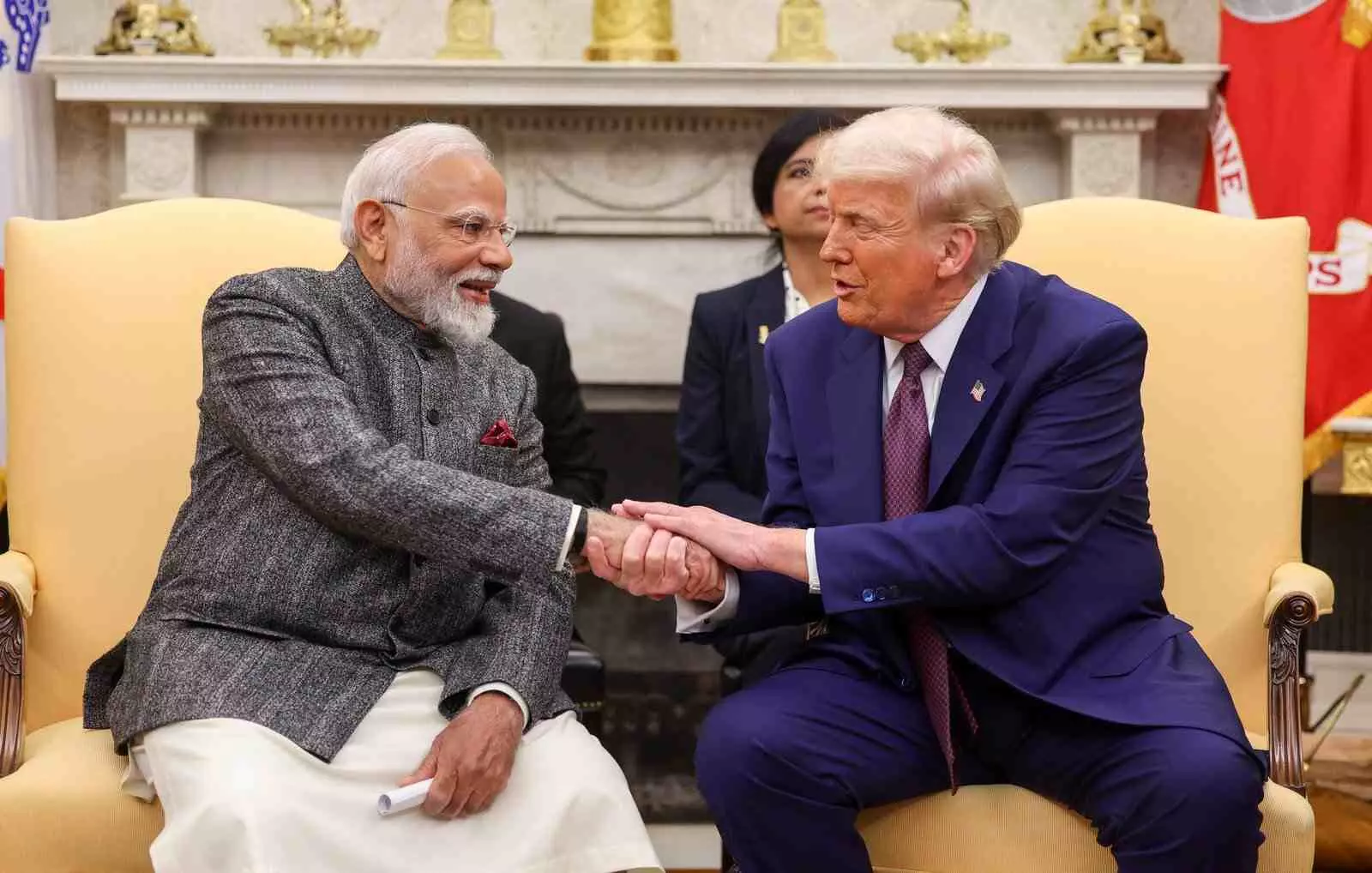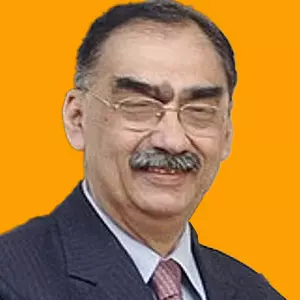
- Home
- India
- World
- Premium
- THE FEDERAL SPECIAL
- Analysis
- States
- Perspective
- Videos
- Sports
- Education
- Entertainment
- Elections
- Features
- Health
- Business
- Series
- In memoriam: Sheikh Mujibur Rahman
- Bishnoi's Men
- NEET TANGLE
- Economy Series
- Earth Day
- Kashmir’s Frozen Turbulence
- India@75
- The legend of Ramjanmabhoomi
- Liberalisation@30
- How to tame a dragon
- Celebrating biodiversity
- Farm Matters
- 50 days of solitude
- Bringing Migrants Home
- Budget 2020
- Jharkhand Votes
- The Federal Investigates
- The Federal Impact
- Vanishing Sand
- Gandhi @ 150
- Andhra Today
- Field report
- Operation Gulmarg
- Pandemic @1 Mn in India
- The Federal Year-End
- The Zero Year
- Science
- Brand studio
- Newsletter
- Elections 2024
- Events
- Home
- IndiaIndia
- World
- Analysis
- StatesStates
- PerspectivePerspective
- VideosVideos
- Sports
- Education
- Entertainment
- ElectionsElections
- Features
- Health
- BusinessBusiness
- Premium
- Loading...
Premium - Events

Trump’s views and actions, particularly in his second term, have grown so unpredictable that it is difficult to foresee how long any stance he adopts will last.
US President Donald Trump’s stance on India and Indo-US relations shifted sharply last week. It remains unclear whether this position will endure or if he will return to the criticisms he had been directing at India over the past few months.
Also read | Thaw in Indo-US ties? PM Modi responds to Trump's 'positive' remarks
Trump’s criticism intensified after his June phone call with Prime Minister Narendra Modi, despite repeatedly referring to Modi as his friend. Trump’s views and actions, particularly in his second term, have grown so unpredictable that it is difficult to foresee how long any stance he adopts will last.
US turns up the heat
Trump had reacted strongly to Prime Minister Modi’s bonhomie with Russian President Vladimir Putin and his positive interaction with Chinese President Xi Jinping on the sidelines of the Shanghai Cooperation Organisation (SCO) summit in Tianjin, China, on August 31 and September 1. Taking to his social media platform Truth Social on September 5, Trump said, “Looks like we’ve lost India and Russia to deepest, darkest, China. May they have a long and prosperous future together.”
Notably, he shared a group photograph of Modi, Xi, and Putin taken at the summit along with his post. His post followed the circulation of a video showing Modi, Xi, and Putin clasping hands momentarily. It is also significant that he mentioned India and Russia together in the post, reflecting his apparent frustration with Putin’s unwillingness to seek an early end to the Ukraine war.
Howard Lutnick, Trump’s Commerce Secretary, amplified the sharp message by making adverse comments on India’s BRICS membership and pressing that India must pick a side. His remarks followed those of Peter Navarro, Trump’s trade and manufacturing counsellor, who once again accused Indian refiners of profiteering from cheap Russian oil.
India did not respond to Trump’s post but rejected Lutnick and Navarro’s comments.
Trump softens, India responds
During this period, there was constant speculation about India seeking to establish communication channels with the Trump administration, even as Prime Minister Modi attended the SCO summit and held meetings with Putin and Xi Jinping. The effort appeared aimed at easing tensions with Trump. At the same time, Modi sought to project to his supporters that he could stand firm against the US President’s hostility and explore alternatives. That hostility had already resulted in Trump imposing a 50 per cent tariff on India, half of it linked to imports of Russian oil.
Barely 24 hours after lashing out at India, Trump abruptly shifted tone. Speaking to an Indian news agency reporter at the White House on September 4, he said, “I will always be friends with Modi. He is a great Prime Minister. India and the United States have a special relationship. There is nothing to worry about. I don’t think we have lost India. I get along very well with Modi. As you know, he was here a couple of months ago, and we went to the Rose Garden.”
Also read | India-US ties special; nothing to worry about: Trump
Modi responded with great alacrity to Trump’s comment. Taking to X, he stated, "Deeply appreciate and fully reciprocate President Trump's sentiments and positive assessment of our ties. India and the US have a very positive and forward-looking Comprehensive and Global Strategic Partnership.”
Soon after, on September 6, External Affairs Minister S Jaishankar said, “Prime Minister Modi attaches enormous importance to our partnership with the US. As far as President Trump is concerned, he (Modi) has always maintained a very good personal equation with him. The point is, we remain engaged with the US, and at this time, I can’t say more than that. But that's really what I would say.”
Diplomatic balancing act
Trump’s remarks, followed almost immediately by positive responses from Modi and Jaishankar, suggest that significant quiet diplomacy has been at work between India and the US to change the President’s tone. That he shifted so quickly after making caustic comments about Modi’s presence at the SCO is typical of Trump, who has never shied away from abrupt U-turns. The real question, however, is what transpired in the exchanges between Indian and US intermediaries and diplomats that prompted this sudden change in stance.
Trump’s concerns revolve around three key issues: India’s continued purchases of Russian oil, its firm refusal to open the agriculture and dairy sectors for a trade deal, and its dismissal of his claimed role in easing India–Pakistan tensions in May. While Trump maintains that his mediation brought about the cessation of hostilities, New Delhi has consistently attributed the outcome to Pakistan’s bilateral approach, denying any US involvement.
Has India agreed to soften up on any of these three issues? It is difficult to see Modi making meaningful concessions on opening agriculture and dairy markets, or accepting US mediation in India–Pakistan disputes, at least until the Bihar elections. What Modi can realistically attempt is a gradual reduction in Indian refiners’ purchases of Russian oil to placate Washington. The question, however, is whether that alone will satisfy Trump. Modi could also make some statements urging Putin to end the Ukraine war, though such a move would risk angering Moscow, particularly after the extensive display of goodwill between Modi and Putin at Tianjin.
Modi’s strategic challenge
Above all, Modi’s main challenge is to secure more measured remarks from Trump and press for a rollback of the tariffs linked to Russian oil imports. Achieving this ahead of the Bihar elections would be a significant political boost for him.
Also read | 'We have lost India, Russia to deepest, darkest China,' says Donald Trump
There is speculation that Jaishankar will head the Indian delegation to the United Nations General Assembly, whose high-level session begins on September 23. Should India and the US reach a modus vivendi by then, and Washington assure an amicable meeting between Trump and Modi, the prime minister will almost certainly travel to New York. Still, any encounter with Trump carries an element of risk for Modi, despite the US President’s repeated references to him as a friend.
The wisest way for any leader to handle Trump may be to follow the adage: “Na inki dosti achhi, na dushmani. Yani kinara kashi hi main budhimani hai (With some, you can have neither friendship nor enmity. It’s wiser to steer clear of them.)”
(The Federal seeks to present views and opinions from all sides of the spectrum. The information, ideas or opinions in the articles are of the author and do not necessarily reflect the views of The Federal.)


